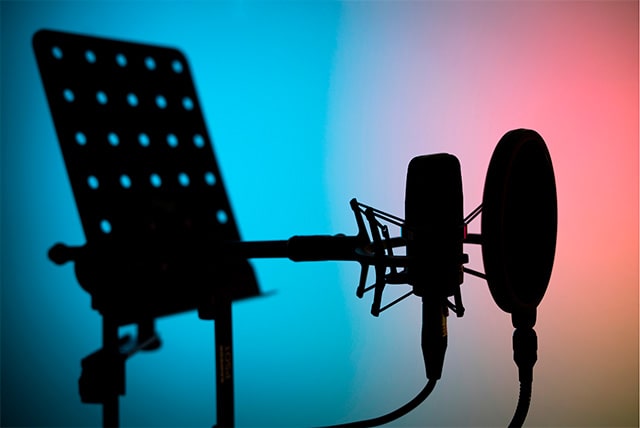The Psychology of Music On Hold

Music on hold is more than just filler sound—it’s a powerful psychological tool that shapes customer experiences and perceptions of a business.
Research shows that the right on hold music can reduce perceived wait times, soothe frustrations, and enhance a company’s brand image.
Music tempo, genre, and volume play a significant role in how callers feel during the wait.
For instance, calming melodies can alleviate anxiety, while upbeat tunes can energize and create positive expectations.
Additionally, cultural relevance and alignment with the company’s identity ensure that the music on hold resonates with the audience, fostering a connection even during brief interruptions.
When Was The Beginning of Music On Hold?
Music on hold began in the early 1960s.
The invention is credited to Alfred Levy, an inventor who accidentally discovered the concept in 1962.
Levy found that a loose wire touching a steel girder in his factory created a conductive connection to a radio broadcast.
This unintended phenomenon allowed callers placed on hold to hear music instead of silence or static.
Music on hold became widely popular and nearly mandatory for customer service during the 1980s and 1990s.

This period marked a significant shift in the way businesses approached client interactions, driven by several factors.
1. Technological Advancements
Telephone systems became more sophisticated, allowing companies to integrate features like automated call handling, on hold music, and announcements.
2. Increased Competition
Businesses recognized that offering a professional and pleasant customer experience gave them a competitive edge. Music on hold became a way to project a polished brand image.
3. Rise of Call Centers
The explosion of call centers in the 1980s meant that companies handled more calls than ever before. On hold music helped to manage caller expectations and improve satisfaction during long wait times.
4. Customer Expectations
As music on hold became more common, customers began to expect it as part of the service experience. Silence or static during a hold period was increasingly seen as unprofessional.
By the mid-1990s, music on hold had transitioned from a novelty to a standard feature in customer service across various industries.
It also evolved to include branded voice greeting messages, creating opportunities for businesses to communicate promotions or helpful information while customers waited.

The Psychology Behind Music On Hold
Engage With Customers
People are naturally drawn to rhythm and melody. Music on hold captures attention and keeps the mind occupied.
Choose music on hold with engaging qualities—like catchy, pleasant melodies or upbeat tempos—that align with your brand.
For example, a tech company might use modern, energetic music, while a spa might choose soothing instrumentals to reflect relaxation.
Reassure Your Customers
Silence during a call can create uncertainty or anxiety, making customers worry about whether their call is still connected.
Calming, harmonious music on hold reassures customers that they are still in the queue and their call is being handled.
Add gentle, friendly voice overs to provide updates, such as, "Thank you for holding. We’ll be with you shortly."
Build Their Trust
Consistency and professionalism in all touchpoints of customer interaction establish reliability.
Select on hold music that reflects your brand’s identity and values.
For example, classical on hold music can convey sophistication, while folk music might signal approachability.
Trust is further built by ensuring the audio quality is clear and professionally recorded.
Reduce Perceived Wait Times

Engaging audio can make time feel like it’s passing faster, a concept rooted in distraction theory.
Play music on hold with an even tempo that prevents restlessness, and intersperse it with friendly updates or interesting facts about your business.
This keeps the customer’s mind engaged, making the wait feel shorter.
Strengthen Your Brand Recognition
Music on hold creates an emotional connection and helps reinforce memory through association.
Incorporate music or jingles that are consistent with your marketing.
If your TV or radio ads use a specific sound or theme, echo it in your on hold music to strengthen brand recall.
Foster Positive Emotions
Music on hold has the power to influence mood, with certain genres or tempos creating feelings of happiness, relaxation, or energy.
Analyze your target audience and select music on hold that aligns with the emotional state you want to evoke.
For example, relaxing on hold music for healthcare callers or upbeat music for retail shoppers can create the desired mood.
Conclusion
By understanding the psychology behind music on hold, businesses can turn waiting time into an opportunity to engage, reassure, and build trust with their customers.
At Amazing Voice, we offer a wide range of music on hold tailored for every industry, no matter where you are in the world.
If you need assistance selecting the perfect music tracks, please don’t hesitate to reach out to us—we’re here to help!
Related Posts

Why Silence Isn’t Golden: The Role of Music On Hold
Even in 2025, people still call businesses. Whether it’s to inquire about services, request support, or place an order, a phone call remains a vital touchpoint for customers. In fact, for many industries, the telephone is often the first real interaction customers have with your brand.

Choosing the Right Voice for Your Production: A Comprehensive Guide
In the realm of communication, the voice over behind your on hold message plays a pivotal role in shaping the audience's perception. Whether it’s a professional voice message on your business on hold phone or an engaging narrative in an eLearning or online course, the right voice over can elevate your voice greeting message and enhance audience engagement.

Dos and Don'ts of Business Voicemail Greetings in 2024
In the dynamic world of business, communication plays a crucial role in establishing and maintaining relationships. One often-overlooked aspect of communication is the voicemail greeting. Whether you are a small startup or a well-established corporation, the voicemail greeting serves as a first impression for clients, partners, and colleagues.




